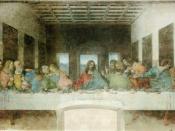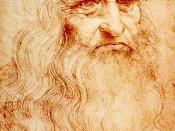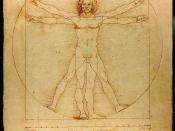The Renaissance was the transitional period between the Dark Ages and the Age of Enlightenment. It's meaning, rebirth, symbolizes human, cultural, political, and economic regeneration. Events at the end of the Middle Ages, beginning in the 12th century, started a reformation of these ideals. The Renaissance started in Florence, Italy in the beginning of the 14th century. The Renaissance was earliest expressed through Humanism. The effect of Humanism helped men leave behind mental restraints caused by religion, inspired open query and criticism, and stimulated a newfound confidence in human thought and creation. From Italy the new Humanist ideas and the Renaissance it brought about extended north to all of Europe. Promoted by the invention of the printing press, which caused an upsurge of the availability of books and other reading materials. Art was looked upon as its own branch of knowledge starting in the Renaissance. And as Michelangelo, da Vinci, and others became famous, people started to look at them, not just as skilled artisans (as they were called at that time), but also as brilliant and imaginative artists, some people even called them geniuses.
So, it was then in the Renaissance that the public started regarding artists as gifted and very special people.
The time period before the Renaissance is most commonly known as the Middle Ages. Society was predominantly rural and feudal. Each town, or kingdom, had a king who prevailed over all of the other people. There really weren't any cities. Many people never traveled off of the manor where he or she was raised. The breakup of the feudal systems, the beginning of city-states in Italy becoming more powerful, especially the rise of Florence and the Midici family, as well as the appearance of monarchies in parts of Europe, and cultural developments cumulated to the...


